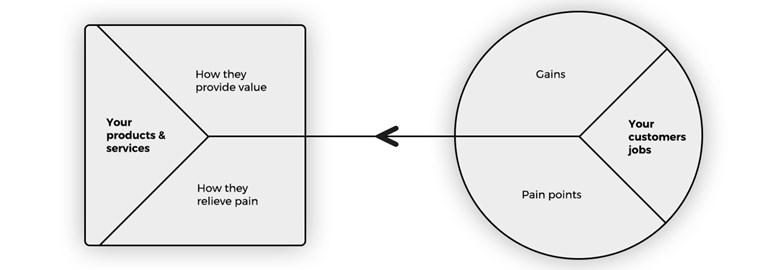November 26, 2019

It's fair to say, brand is often devalued in B2B. The misconception your brand is a logo, typeface and colour palette has led to its true value being misunderstood.
Excuses for not investing in brand
We often hear of B2B businesses struggling to get buy-in for brand building projects at board level. Common reasons that we've heard:
- Our people are our brand
- We sell on referral - our clients don't care about brand & marketing
- Our clients buy on price not brand story
- Our biz dev teams win new clients, not our brand
The payback of a strong B2B brand
The truth is, in the age of established companies facing disruption from start-ups, brand has become one of the most important assets to help you compete.
A strong brand should be prevalent throughout your whole customer experience. It should feature in every touch point, every conversation and every piece of communication.
Neglecting your brand is effectively opening the door for competitors to gain market share by allowing them to:
- Create a differentiated proposition and stand out from the crowd
- Tell a memorable brand story that excites customers and gives them a reason to try their products or service over yours
- Establish perceived value and therefore sell at a higher price point
- Create lasting customer loyalty and advocacy
- Attract and retain the best talent
How to crate a B2B brand that is more than just a logo
So, how do you go about creating a brand that is more than just a logo? How do you create a brand that delivers business value that will be recognised at board level? At Tangent, we advise our clients to focus on these three pillars.
1. Be Relevant
Having a relevant brand means meeting your clients’ needs. It’s an obvious one, but also easily neglected if you are not continually gathering feedback from them.
How to make your brand relevant:
- Position your brand so your clients cannot live without it
- Create a brand your clients depend on
- Make sure your service is available where and when your clients need it
- Inspire your clients to do more by creating emotional connections
- Show that you exist to fulfil a larger purpose
- Innovate- meet your clients' needs in new and better ways
A workshop exercise we use at Tangent to help our clients evaluate the relevancy of their service is 'Value Proposition Mapping'.
We run workshops with stakeholders to complete the map below. The objective is to identify the jobs clients are trying to complete and then identify how your products and services can relieve their pain points and create value.

The exercise is valuable to clients in three ways:
- Identify gaps in their service offering
- Identify new opportunities to expand that offering
- Establish the best product-market fit
2. Be coherent
Consistency of logo usage, colour and tone of voice is all important in branding, but I often see B2B brands becoming stale and repetitive by not understanding brand coherency.
Having a consistent brand is when elements go untouched over time, whereas coherence is when elements of the brand feel recognisable and familiar.
Focussing your strategy only around consistency will mean committing to being stagnant.
Our advice would be to know the pillars that are the foundation of what you stand for and stick to them ruthlessly. But, don’t be afraid to try that new campaign, piece of tech or visual. Testing new ideas or stretching your brand guidelines is what makes brand marketing effective, exciting and will get you noticed.
3. Allow clients to participate
The more interactive the branding environment you create for your clients, the more likely your brand will be remembered. Our brains are programmed to respond to interactive surroundings, improving the memorability of your brand.
One of the best examples of brand participation I’ve seen recently has to be Fearless Girl. State Street Global Advisors installed Kristen Visbal’s statue as part of an initiative to encourage companies to increase female representation on their boards.
So, when it comes to creating brand participation in your firm, think about the opportunities you have within your physical spaces to create experiences that will allow your clients to engage and learn more about your brand's purpose. Reception areas, events, career fairs and partner conferences are all amazing opportunities.
Wrapping up
The next time someone in your company refers to brand as just being about a logo, please remind them that your brand is the whole experience you provide your clients. Most importantly it is the impression you leave behind.
Brand is, now more than ever, an important asset for B2B organisations in the race to engage clients, create loyalty and attract the best talent.
And don’t forget to mention that, according to Forbes, revenue growth of the most relevant brands has outperformed the S&P 500 by 28% over the last decade.
About this blog
This content was originally part of a presentation our Experience Design Director, Richard Trigg and Taylor Wessing's Head of Marketing, Sophia Headland, gave at The Interlex Group’s Annual meeting in London.


















